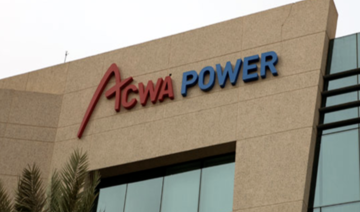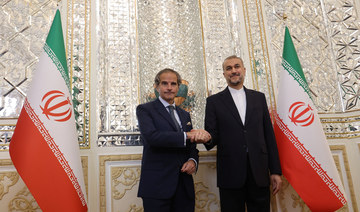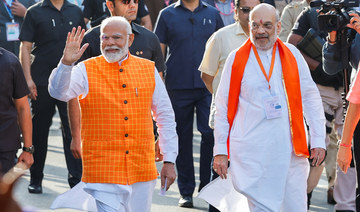KARACHI: Destine to become the fourth fastest growing economy by 2030, Pakistan, supported by a growing population, fast growing business and increasing penetration of Internet, is poised to grab first position among the digital economies, Information Technology (IT) experts say.
US technology giant, Google, says Pakistan is quickly becoming a “digital-first country”, which means there are new opportunities for brands to reach and engage with consumers that may have previously been overlooked.
“It shows that Google has realized the marketing potential of the country and they are now encouraging businesses to focus on Pakistan as a potential market,” Badar Khushnood, vice president of growth at Fishry.Com and vice chairman of P@SHA, commented.
According to Google, there are five reasons for “considering expanding your digital campaigns into Pakistan”.
Pakistan’s growing population is the first reason that makes the country attractive for the foreign and local investors to venture into the IT sector.
“Pakistan has a population of more than 202 million people, which means there are lot of potential consumers coming online every day. And the country is even more urbanized than neighboring India, with nearly 40 percent of total households living in cities,” writes Lars Anthonizen, head of large customer marketing, South Asia, Google.
Pakistan’s economy grew by 5.7 percent in fiscal year 2018. HSBC in is recent report published in September 2018 has projected Pakistan to become the fourth fastest growing economy by 2030.
Around 90 percent of the companies in the country are SMEs which are contributing more that 40 percent to the country’s 313 billion economy, according to the State Bank of Pakistan.
Third attraction, according to Google, is the country’s growing smart phone users. Pakistan has 152 million cellar subscribers, and 60 million 3G/4G subscribers, according to Pakistan Telecommunication Authority (PTA).
This number will likely grow quickly as smart phone prices have dropped over the last few years. Pakistan also has some of the cheapest data prices in the world, which is helping to grow mobile app usage, according to Google.
However, experts say more work is needed to be done to fully utilize the existing potential. “We need to work on optic fibers, penetration of 4G, creation of data centers, telecom infrastructure and most importantly creation of awareness among masses,” Pervaiz Iftikhar, a member of the newly formed prime minister’s Taskforce on IT and Telecom, told Arab News.
Pakistan’s overall Internet penetration stands at 29.9 percent with 62 million broadband subscribers, a fourth attraction for the investor, as per Google. In spite of this, digital consumption in the country continues to grow quickly. YouTube watch time, for example, has seen over 60 percent growth over the last three years.
The Chinese-Pakistan Economic Corridor (CPEC) is the largest Chinese investment venture in Pakistan with around $62 billion, a fifth reason to look toward Pakistan.
The mega project under BRI is not only limited to the infrastructure and energy sector but it is also contributing to the growth of the IT sector in Pakistan.
“One of the first CPEC projects is to lay 820 kilometers of fiber-optic cable, connecting more Pakistanis to the Internet. This is in addition to ongoing investments in 3G and 4G network expansions from China Mobile, and the company has already announced plans to invest another $225 million in 4G expansion (bringing its total investment to $2.4 billion),” writes Lars Anthonizen.
“We have to connect every village through fiber optics that will not only create thousands of jobs but would multiply opportunities for the IT business countrywide,” Pervaiz Iftikhar added.
“A lot of potential exists in the IT sector of Pakistan with the young population turning to computers, smart phones and other digital means, and the country offers big market for local and foreign investors”, Jehan Ara, another member of the prime minister’s Taskforce on IT and Telecom and president of P@SHA, commented.
Badar Khushnood, who is also former consultant of Google, Facebook and Twitter, called for comprehensive policy for the growth of the IT sector.
“Taxation systems should be rationalized, simplified, and encouraging for startups. The country also needs data protection laws, and broader cyber laws,” he added.
The first meeting of the prime minister’s Task Force on IT and Telecom is expected to be held next week in Islamabad. “Comprehensive strategy including short term and long term measures would be discussed in the upcoming meeting of taskforce because country needs a policy for the persistent growth of IT and Telecom sector”, Pervaiz Iftikhar informed.
Pakistan fast becoming ‘Digital-first country’ — Google
Pakistan fast becoming ‘Digital-first country’ — Google

- Google white paper lists five reasons to expand digital campaigns to Pakistan
- Pakistan is on track to produce one of the largest digital audiences in the world
Saudi-Malaysian economic ties strengthen with launch of business council
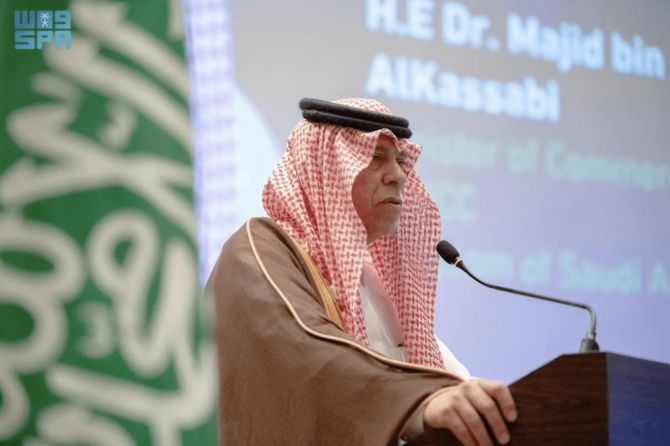
RIYADH: Economic ties between Saudi Arabia and Malaysia are set to soar with the launch of a business council aimed at catalyzing growth and collaboration across various sectors.
The council was inaugurated during the visit of Saudi Minister of Commerce Majed bin Abdullah Al-Qasabi, who led a delegation comprising 44 officials and leaders representing 20 government bodies and 24 private sector entities to the Southeast Asian country.
The minister announced the establishment of the business council, emphasizing its goal of enhancing economic relations between the two countries.
“We inaugurated today with the Minister of Investment, Trade and Industry, Tengku Zafrul Aziz the Saudi-Malaysian Business Council to contribute to strengthening economic and trade relations in the promising sectors in the two brotherly countries,” Al-Qasabi said in a post on his X account on May 6.
The Saudi minister further held a roundtable meeting with Aziz, attended by Sulaiman Mahbob, chairman of the Malaysian Investment Development Authority, and Dato Seri Reezal, chairman of the Malaysia External Trade Development Corp., along with Shaharul Sadri Alwi, director general of the Department of Standards Malaysia.
Al-Qasabi pointed out that the talks with Malaysian officials revolved around enhancing partnerships within the business sectors of both nations.
Concluding his visit to the Southeast Asian country, the commerce minister mentioned that he had also held meetings with Ewon Benedick, minister of entrepreneurship development; Mohamad Sabu, minister of agriculture and food industry; and Alexander Nanta Linggi, minister of works.
“We discussed cooperation in the areas of training, knowledge transfer, innovation, and sustainability, while also reviewing Malaysia’s experience in supporting small and medium-sized projects,” Al-Qasabi said.
During the meetings, efforts to encourage exports and enhance the capabilities of Saudi and Malaysian companies to access global markets were discussed, the Saudi Press Agency reported.
It added that collaboration in capacity building in innovation, emerging technologies, research programs, and e-commerce was emphasized.
Al-Qasabi affirmed that Saudi Arabia’s Vision 2030, launched by Crown Prince Mohammed bin Salman, has brought about significant transformations in the Saudi economy since its announcement in 2016.
He noted the close trade relations between Saudi Arabia and Malaysia, highlighting significant opportunities for expansion and diversification. The minister emphasized Saudi Arabia’s efforts to become a global hub for trade and logistics services.
In conjunction with the Saudi delegation’s visit to Malaysia, representatives from the Federation of Saudi Chambers, led by Secretary-General Waleed Al-Orainan, participated in the meeting aimed at exploring investment opportunities in both countries.
The meeting concluded with the signing of significant partnership and investment agreements between the two sides.
Al-Orainan and the President of the National Chamber of Commerce of Malaysia, Tan Datu, signed an agreement to enhance economic cooperation.
Moreover, private sector companies from both countries held bilateral meetings and signed trade and investment partnership agreements in multiple sectors.
King Khalid airport opens direct route to Beijing with 3 flights a week

RIYADH: King Khalid International Airport has announced the inauguration of a new air route that will connect Riyadh to the Chinese capital, Beijing.
The route will be serviced by three weekly flights operated by Air China, starting May 6, the Saudi Press Agency reported.
The airport, managed and operated by Riyadh Airports Company, said the new route reflects the company’s commitment to enhancing direct air connectivity between the Kingdom and China.
The initiative is intended to allow more Chinese tourists to visit the Kingdom, explore additional tourist destinations and discover existing investment opportunities, the RAC said.
The company also said that the collaboration with Air China is a result of a series of pioneering achievements by RAC, including obtaining the “Welcome Chinese” certification for King Khalid International Airport last July. The certification enhances the prospects of success in cooperation between the two parties, the company said.
The RAC said that the launch of the new route will contribute to achieving the targets of the National Civil Aviation Strategy, which aims to increase air connectivity to more than 250 destinations and 29 airports.
The strategy includes developing airport infrastructure and establishing regulatory frameworks for operational processes at international and local level.
Iran sentences man to death for posts during 2022 protests
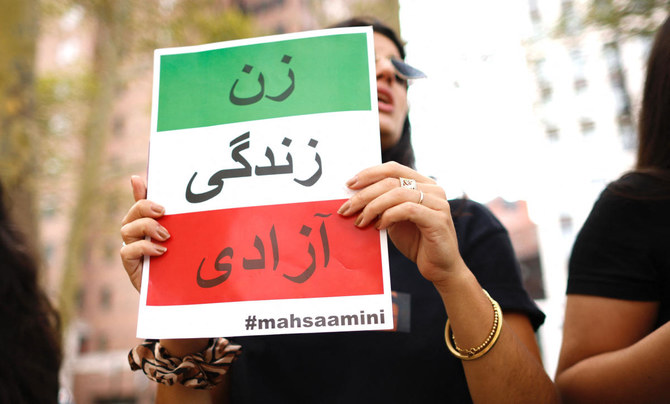
- Mahmoud Mehrabi was convicted of inciting killings, insulting religious sanctities
TEHRAN: An Iranian court has sentenced a man to death over content he posted online during 2022 protests over the death in custody of an Iranian-Kurdish woman, the judiciary said Tuesday.
Iran was gripped by months-long protests over the death of Mahsa Amini, 22, after she was arrested for an alleged breach of the strict dress code for women.
The judiciary’s Mizan Online website said Mahmoud Mehrabi was found guilty of posting content that included guidance on how “to use homemade weapons and called for the destruction of public property.”
He was convicted of “inciting people to commit killings and insulting religious sanctities,” it added.
Lawyer Babak Farsani said Mehrabi was found guilty of the capital offense of “corruption on earth.” He can appeal against the sentence before the Supreme Court.
The months-long protests sparked by Amini’s death saw hundreds of people killed in street clashes, including dozens of security personnel.
Thousands were arrested as authorities moved to quell what they branded foreign-instigated “riots.”
Last month, an Iranian court sentenced popular rapper Toomaj Salehi to death for supporting the demonstrations.
Nine men have been executed in protest-related cases involving killings and other violence against security forces.
Amnesty International says Iran executed 853 people in 2023, the highest total since 2015.
Modi, Gandhi urge more Indians to vote as election reaches halfway mark
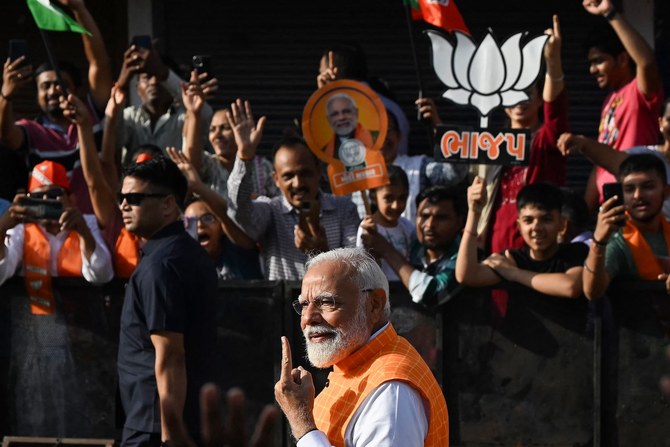
- Voter turnout in the first 2 phases of election was lower than in 2019
- With phase 3 complete, half of voters should have already cast ballots
New Delhi: Prime Minister Narendra Modi and his chief opponent Rahul Gandhi called on voters to cast their ballots on Tuesday, as India’s massive general election reached its halfway mark with a turnout lower than expected.
More than 968 million people have been registered to vote and the polls are held in seven phases from April 19 until June 1. Some of India’s 28 states and eight federally governed territories complete the process on a single day, while others spread it out.
The first two phases of the election were held on April 19 and April 26 in 190 constituencies, with a voter turnout of 66.1 percent and 66.7 percent respectively — about 4 percent lower than in 2019.
In the third phase on Tuesday, citizens from 94 constituencies in 12 states went to the polls, including in Modi’s home state of Gujarat.
“Urging all those who are voting in today’s phase to vote in record numbers. Their active participation will certainly make the elections more vibrant,” the incumbent prime minister said on X after casting his ballot.
Modi is eyeing a rare third straight five-year term in power, targeting 400 seats for the National Democratic Alliance led by his Hindu nationalist Bharatiya Janata Party, which has been in power since 2014.
He is challenged by an alliance of two dozen opposition parties — the Indian National Developmental Inclusive Alliance, or INDIA, led by the Congress Party, which has ruled the country for close to 45 years since its independence in 1947.
Gandhi, Modi’s key contender and Congress leader, is the son of Rajiv Gandhi, a grandson of Indira Gandhi, and a great-grandson of Jawaharlal Nehru — all of whom had served as prime ministers of India.
Congress plunged to a historic low when it was swept out of power by the BJP in the 2014 election, and won its second-lowest number of 52 seats in 2019.
As the turnout showed a declining trend in the first and second phases of the ongoing poll, Gandhi also took to social media to ask voters to show up.
“I request all of you to come out in large numbers and vote to protect your rights,” he said. “Remember, this is not an ordinary election, it is an election to protect the democracy and constitution of the country.”
More than 498 million people were eligible to vote in the first three phases, or 60 percent of all registered voters. The total number of parliamentary seats up for grabs is 283 out of 543.
The party or coalition that wins at least 272 seats will form the government.
Although surveys suggest Modi will win a majority in parliament easily, analysts say a repeat of his landslide victories in 2014 and 2019 is unlikely.
“I think the election has not gone very satisfactorily for the ruling party led by Prime Minister Narendra Modi. The results may be well below their expectations,” said Anand K. Sahay, a columnist and commentator based in Delhi.
“My own broad sense is that the government is in the doldrums.”
He said Modi was repeating his previous strategy of mobilizing voters through majoritarian Hindu sentiment, omitting the voters’ main concerns, which pre-poll surveys have identified as unemployment and inflation.
“The prime minister of India is holding on to one single narrative, that is ranting against the Muslims of India. A man who regards himself as a very successful prime minister for 10 consecutive years is not talking about issues and the records of the governance. There is a deafening silence on that front,” Sahay told Arab News.
Apoorvanand Jha, a public intellectual and professor at the University of Delhi, said voters were now “weary” of the rhetoric propagated by the BJP, but it was not clear whether that would result in a regime change.
“What people have realized now is that it is only political rhetoric and, actually, there is no governance, so that has created a feeling of unease even in the supporters of this regime,” he said.
“One does not know whether that will lead to a major change or not. But this is a major shift. The myth of the invincibility of Narendra Modi is broken and the myth of the popularity of Narendra Modi is also something that people have started questioning.”
Two suspected Kashmir rebels killed in clash with Indian forces
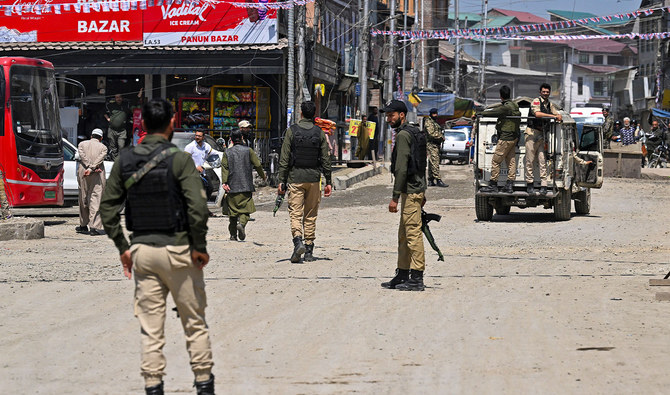
- Firefight between suspected rebels, soldiers takes place amid national elections in disputed territory
- Divided between nuclear-armed India and Pakistan since 1947, Kashir is claimed by both countries in full
SRINAGAR, India: Two suspected rebels were killed in Indian-administered Kashmir during a firefight with soldiers, police said Tuesday, at a time when campaigning for national elections is underway in the disputed territory.
Scores of soldiers besieged a residential area in southern Kulgam district, some 70 kilometers (43 miles) from Kashmir’s biggest city Srinagar, on Monday after armed militants were suspected to be present inside a house.
Two bodies of the suspected rebels “were recovered so far” from the site, police said in a statement posted Tuesday on social media platform X.
Images from the area showed smoke billowing from a house after it caught fire during the skirmish.
Kashmir has been divided between India and Pakistan since their independence in 1947, with both claiming the Himalayan territory in full.
Rebel groups opposed to Indian rule have for decades waged an insurgency in Indian-controlled Kashmir, demanding either independence or a merger with Pakistan.
The conflict has left tens of thousands of civilians, soldiers and militants dead.
Violence and anti-India protests have drastically reduced since 2019, when Prime Minister Narendra Modi’s government canceled the Muslim majority region’s limited autonomy.
But clashes between security forces and rebel groups have increased since voting began last month in India’s six-week election.
Three suspected rebels were killed and a police officer and three soldiers wounded in three separate clashes across the territory in April.
Militants ambushed a military convoy in Kashmir’s south on Sunday, killing one Indian air force corporal and wounding four other troops.


